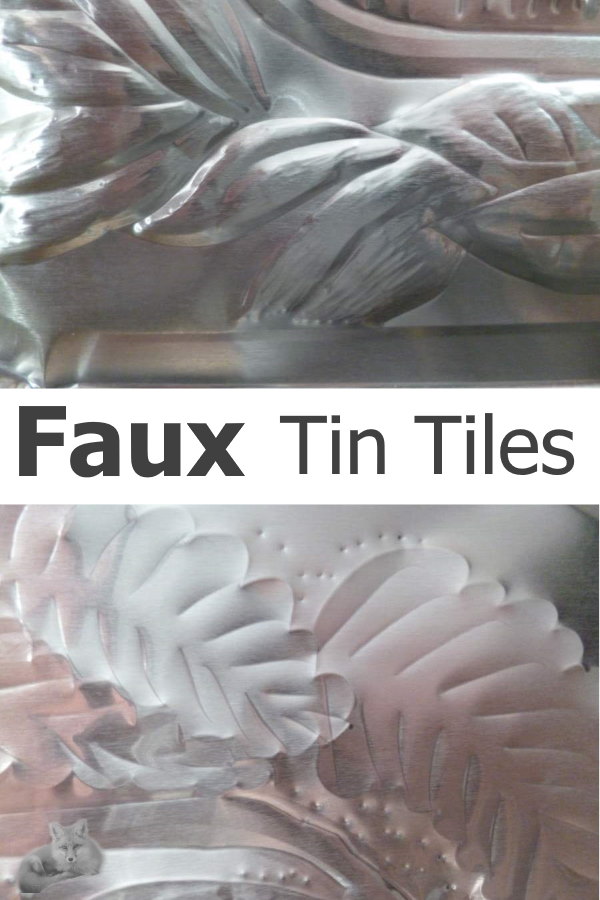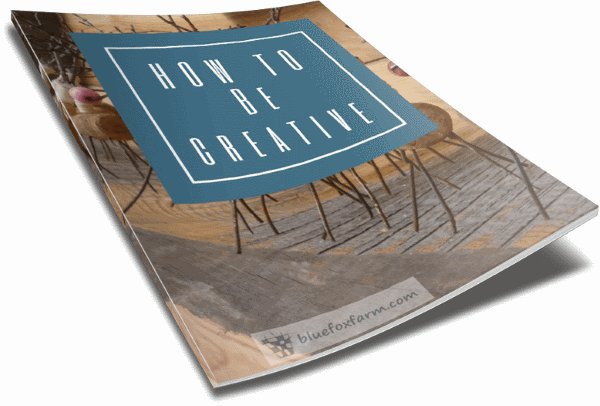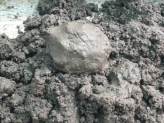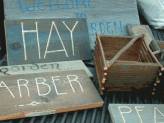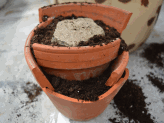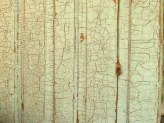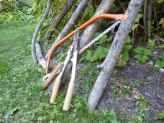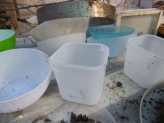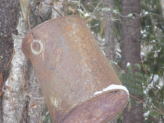Faux Tin Tiles
Pressed Tin, Revisited
Jacki Cammidge is a participant in the Amazon Services LLC
Associates Program, an affiliate advertising program designed to
provide a means for sites to earn advertising fees by advertising and
linking to amazon.com. Other links on this site may lead to other affiliates that I'm involved with, at no extra cost to you.
A DIY Tutorial for making your own Faux Tin Tiles for a vintage look - these are easy to make with just a few supplies but a deceptively complicated-looking result.
The picture here is of some real tin tiles, and were a selling feature of this ramshackle house in Grand Forks.
In houses built around the early 1920's, pressed tin ceiling tiles were a common form of decoration.
If you find any of these at an auction or in a flea market, grab them!
They're getting more rare by the year, and soon the only way to have this look will be to make your own.
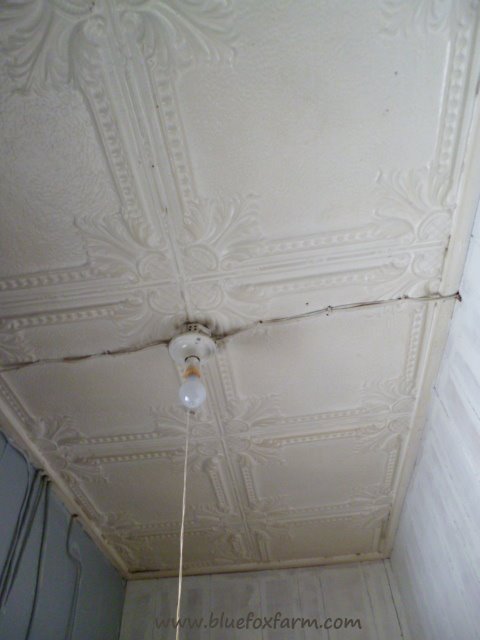
Never one to let the moss grow under my feet, I discovered a way of making something similar but as usual, I had to give it my own twist.
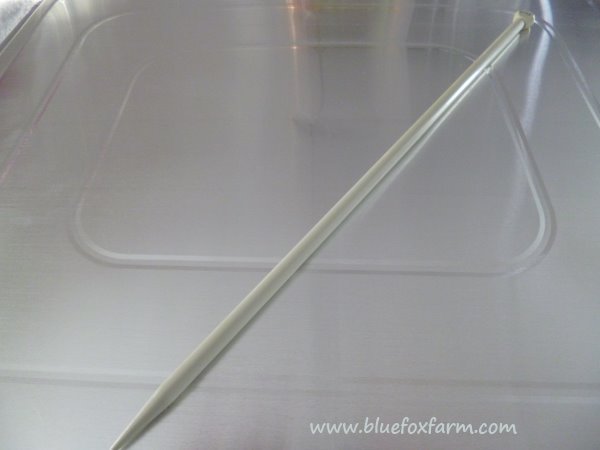
The thin aluminum sheets that are meant to protect the bottom of your oven from splashes and spills, or disposable cookie sheets are a thickness between chimney or roof flashing, and aluminum foil.
The two that I got are packaged together, for about $4, but you may find something cheaper in the dollar store.
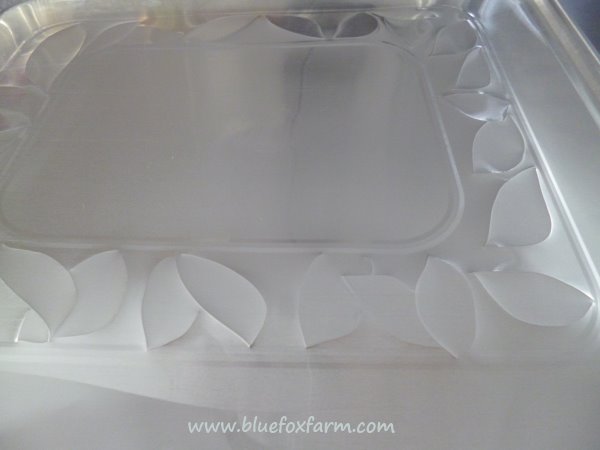
There are two sides to the aluminum sheets; you will get a different look by using the tool (a knitting needle) to score the lines (here, freehand) on either side.
Use a folded towel underneath, so the needle doesn't poke through.
The tin (aluminum) is quite tough and will withstand a fair bit of rough treatment.
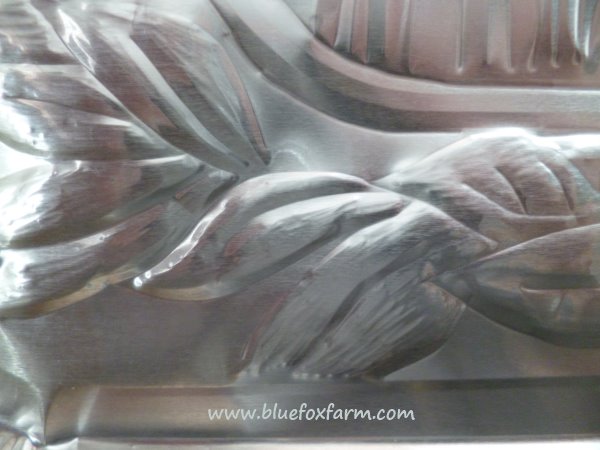
The important thing to remember is not to press too hard; many smaller, lighter strokes are better than trying to rush through it.
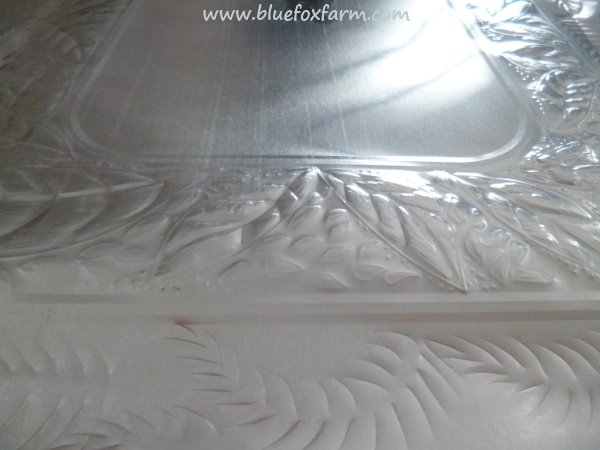
Simple and repetitive designs give a feeling of cohesion. This will be a triptych, or three panels, all with different but nature based designs.
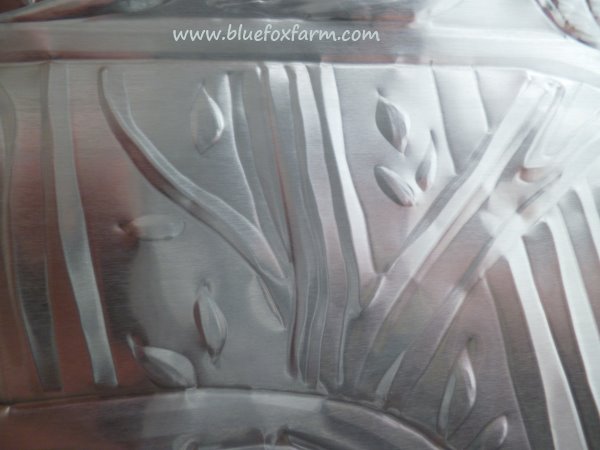
I had a lot of fun with the design of trees; they are amazingly easy to do, and even the simple lines actually do have the depth and texture of the bark.
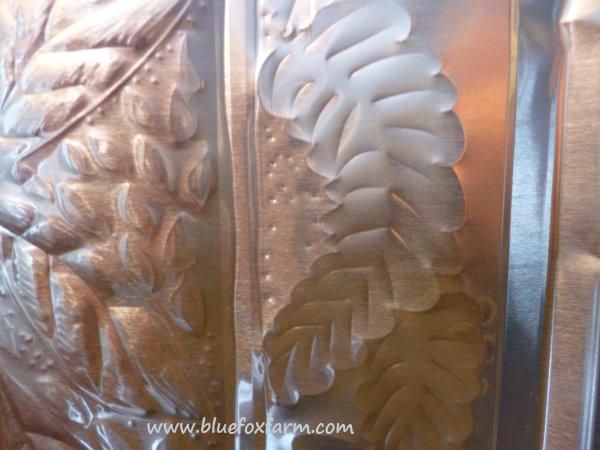
Another close up of the different styles of leaves; some were made to resemble willow leaves, with a simple tear drop shape; the ferny ones were outlined after the veins were done on one side of the tin, and then the scalloped edge was done on the other.
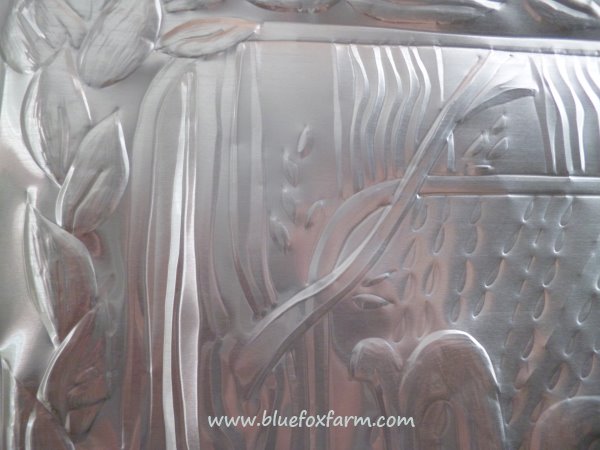
These are a lot of fun, but intensive to work on. The trick, as with any of these kinds of crafts, is to know when to stop before you've overdone it. That's the secret of a deceptively complicated result.
Learn what it takes to be creative - we all have the gene but how do we develop it? Get the free guide!
Fill in the form below for your copy;
(Don't be disappointed - use an email address that will accept the free download - some .aol email addresses won't.
If you don't see your download within a few minutes, try again with another email address - sorry for the bother.)
